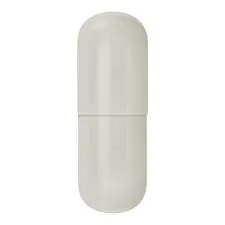
Oct . 12, 2024 02:53 Back to list
แผ่น hpmc
Understanding HPMC An Essential Excipient in Pharmaceutical Formulations
HPMC, or Hydroxypropyl Methylcellulose, is a cellulose derivative that plays a significant role in the pharmaceutical industry. Its unique properties make it an indispensable excipient in a variety of formulations, ranging from tablets to gels. In this article, we will explore the characteristics, applications, and advantages of HPMC in pharmaceutical formulations.
What is HPMC?
HPMC is a white or off-white, odorless powder, which is soluble in cold water to form a viscous gel. It is derived from natural cellulose, which has undergone chemical modification to enhance its solubility and functionality. The molecular structure of HPMC consists of a linear chain of glucose units with hydroxypropyl and methoxy groups attached. This modification allows HPMC to provide a variety of physicochemical properties, making it versatile for use in various applications.
Properties of HPMC
HPMC possesses numerous beneficial properties which contribute to its wide-ranging applications
1. Hydrophilicity HPMC is highly soluble in water, enabling it to form gels and solutions that are crucial for drug delivery systems.
2. Thickening Agent It serves as an effective thickening agent, enhancing the viscosity of formulations, which can improve the stability and texture of suspensions and emulsions.
3. Film-Forming Capacity HPMC can form a thin film upon drying, making it suitable for coating tablets and extending the release of active pharmaceutical ingredients (APIs).
4. Biocompatibility As a cellulose derivative, HPMC is generally recognized as safe (GRAS) and exhibits low toxicity, making it suitable for various pharmaceutical applications, including those for sensitive populations.
.
HPMC is utilized in diverse pharmaceutical formulations, including
แผ่น hpmc

1. Tablet Formulations HPMC is commonly used as a binder in the formulation of tablets. It aids in maintaining the integrity of the tablet during compression and enhances disintegration, promoting the release of active ingredients.
2. Controlled Release Systems Due to its film-forming ability, HPMC is extensively employed in the development of controlled-release formulations. It allows for the gradual release of drugs over time, improving therapeutic outcomes and reducing dosing frequency.
3. Topical Formulations In creams and gels, HPMC acts as a thickening agent and stabilizer, providing desirable texture and consistency. Its film-forming property helps protect the skin and enhance the delivery of active ingredients.
4. Liquid Formulations HPMC is also used in liquid dosage forms, such as suspensions and emulsions, to improve stability and achieve the desired viscosity.
Advantages of HPMC in Pharmaceutical Formulations
The use of HPMC in pharmaceutical formulations offers several advantages
1. Enhanced Stability HPMC contributes to the physical stability of formulations, preventing sedimentation in suspensions and ensuring a consistent release of APIs.
2. Versatility Its ability to form gels, thicken, and act as a binder makes HPMC suitable for a wide range of formulations, facilitating creative formulation strategies.
3. Patient Compliance Improved mouthfeel and texture in liquid formulations lead to higher patient compliance, making HPMC an attractive option for developers.
4. Compatibility HPMC is compatible with a variety of excipients and active ingredients, allowing for diverse formulation possibilities without compromising efficacy.
Conclusion
In conclusion, Hydroxypropyl Methylcellulose (HPMC) is a versatile excipient with numerous applications in the pharmaceutical industry. Its unique properties such as hydrophilicity, film-forming ability, and biocompatibility make it an essential component in various drug formulations. Ongoing research and development continue to explore innovative applications of HPMC, solidifying its role as a cornerstone in the quest for effective and patient-friendly pharmaceutical products.
-
Versatile Hpmc Uses in Different Industries
NewsJun.19,2025
-
Redispersible Powder's Role in Enhancing Durability of Construction Products
NewsJun.19,2025
-
Hydroxyethyl Cellulose Applications Driving Green Industrial Processes
NewsJun.19,2025
-
Exploring Different Redispersible Polymer Powder
NewsJun.19,2025
-
Choosing the Right Mortar Bonding Agent
NewsJun.19,2025
-
Applications and Significance of China Hpmc in Modern Industries
NewsJun.19,2025







